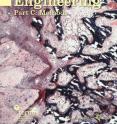Freeze-dried heart valve scaffolds hold promise for heart valve replacement
The biological scaffold that gives structure to a heart valve after its cellular material has been removed can be freeze-dried and stored for later use as a tissue-engineered replacement valve to treat a failing heart, as described in an article in Tissue Engineering, Part C: Methods, a peer-reviewed journal from Mary Ann Liebert, Inc. (www.liebertpub.com). The article is available free online at www.liebertpub.com/ten Shangping Wang and colleagues from Leibniz University, Corlife, and Hannover Medical School, Hannover, Germany, studied various strategies for freeze-drying porcine heart valves. After the cellular material was removed, they freeze-dried the heart valve scaffolds with or without sucrose and hydroxyl ethylene starch, and then compared the stability and elasticity of the freeze-dried scaffolds to assess the effectiveness of these lyoprotectants in preventing degradation of the scaffold. They report their findings in the article “Freeze-dried Heart Valve Scaffolds.”
“Advances in heart valve technology are essential for improvement of patient care," says John Jansen, DDS, PhD, Methods Co-Editor-in-Chief and Professor and Chairman, Department of Biomaterials, Radboud University Nijmegen Medical Center, The Netherlands. "The authors have discerned critical methods for heart valve scaffold preservation that may fundamentally change the way that heart valve reconstruction is performed."
Source: Mary Ann Liebert, Inc., Publishers
Other sources
- Freeze-dried heart valve scaffolds hold promise for heart valve replacementfrom Science DailyWed, 15 Feb 2012, 14:30:48 UTC
- Freeze-dried heart valve scaffolds hold promise for heart valve replacementfrom Biology News NetTue, 14 Feb 2012, 21:30:39 UTC
- UCLA docs guide mom with heart condition through birth, operate on newbornfrom PhysorgTue, 14 Feb 2012, 13:32:13 UTC
